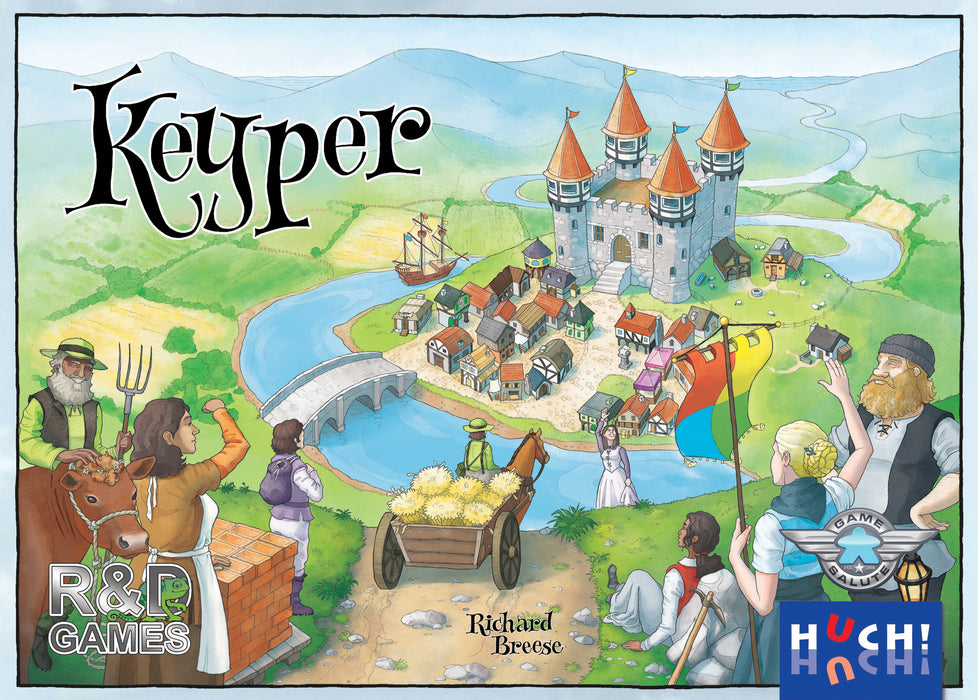
Keyper
Designer: Richard Breese
Artist: Vicki Dalton
Year Published: 2017
Number of Players: 2 - 4 players
Playing Time: 90 minutes
Recommended Ages: 14+
Categories: City Building, Economic, Farming, Medieval
Mechanics: Area Control / Area Influence, Set Collection, Tile Placement, Worker Placement
Keyper is a game with high player interaction for two to four players played over four rounds. Each round represents a season: spring, summer, autumn and finally winter.
Each player starts the game with their own village board, a mini keyp board, 12 village tiles, a keyper (waving meeple) in their player color, and a team of eight multi-colored keyples, including two white keyples. Each differently colored keyple is a specialist in one activity: the brown keyper is a woodsman, the black keyple is a miner, the orange keyple a clay worker, etc. The white keyples are generalists who can represent any other color.
Keyper is a worker placement game. (Keyper is the eighth new title in the medieval Key series of games, with Keydom, the second in the series being widely recognized as the first of the worker placement genre of games.) What makes Keyper special is that when one player places a keyple on a country board, another player can join them with a matching colored keyple on the first player's turn to the benefit of both players. In this way some players are likely to have played all their keyples before others. All keyples have the potential to work twice. If a player has played all of their keyples, but another player still has some, then on their turn the player with no remaining keyples can lay down one or more keyples on the country board they have claimed or in their village board to secure additional resources or actions. It can therefore be doubly beneficial to co-operate with your fellow players, although Keyper is not a co-operative game in the usual sense of the term.
More information: here
